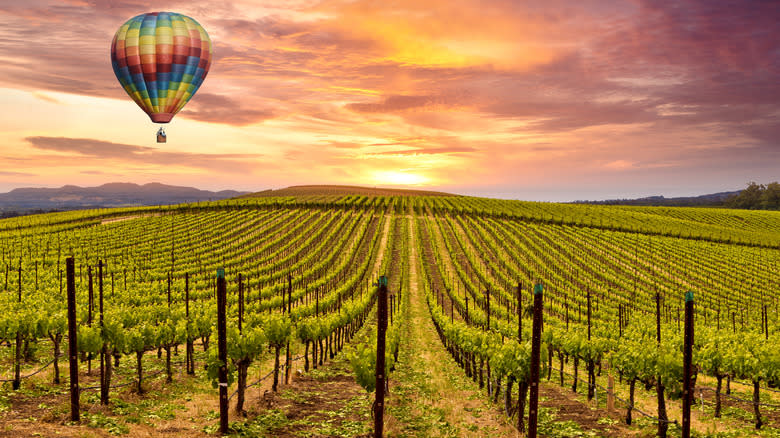The Regional Difference Between Old And New World Wine

Whether you're new to wine or a seasoned aficionado, the classification systems and terminology that differentiate one wine from another may seem overwhelming. A somewhat archaic classification system used the terms "Old World" and "New World" to delineate the different regions the wines came from. The codification also encompasses the alcohol content, flavor, and how the wine is made.
Basically, Old World means wine from anywhere in central Europe and New World signifies wine made in any other region. However, there are inherent flaws within the constricts of this framework. The most glaring discrepancy is the terminology's historical inaccuracy, meaning that the term leaves out Rome, Greece, and other antique vintners from the equation entirely
Due to technology, modern commerce, and the overwhelming popularity of wine, there are new terroirs, or regions, that make beautiful wines outside of Europe. New world vintners, like those in the Americas, have adopted the techniques and knowledge of their predecessors to create vintages that are unique to their terroir, based on the grape varietal, climate, and soil. The easiest way to distinguish the two is to think about the processing method. Old world vintners dried grapes in the sun and mashed them manually. New world methods have commercial dryers and vats in which to store the wine and mass produce the finished product. This is not to say that one method is better than the other, it's just that vintners have adapted to modernized methods.
Read more: 15 Cheap Wines You Should Be Buying
Old World Wine

Old world wine designates any wine made throughout Europe, in regions such as France, Spain, Italy, and Portugal. The wines are known for their light body, low alcohol content, and deep, historical roots to their territory. The wine is labeled with the terroir (region) where the grapes are grown. This is an important element in Old World winemaking, as the vintners place heavy emphasis on the soil.
These vintners believe that the terroir is the most critical element in producing quality wine, with less emphasis on the grape varietal. The grapes are also grown closer together because they were once picked without the use of modern machinery. The region Old World wine is produced in is so steeped in tradition that there are strong governmental regulations that place strict rules on how grapes are harvested.
Terroir is critical to Old World wine vintners. However, the term comprises more than just the land where the grapes are grown. It's a culmination of the soil, the climate, and the history of a particular vineyard that make up the taste and the essence of a quality wine.
New World Wine

New World wine encompasses winemakers in regions outside of central Europe, including North and South America, awho have borrowed their wine-making techniques from the Old World. These wines are more fruit forward, have a full body, higher acidity, and are higher in alcohol content than Old World wines. The bottle labels place emphasis on the grape varietal more than the region where the grapes were harvested and the vintners place less emphasis on traditional methods and focus more on using new techniques to develop their wine.
New World regions include California, Oregon, Chile, and South Africa. Each region has different climates and soil conditions, which affect the outcome of the wine. Between the region and the way the wine is produced, the flavor is bold and can stand on its own.
One could argue that New World wines embrace an innovative spirit due to the fact that they are not as heavily regulated as those from vineyards in European terroirs. This gives the vintners the flexibility to experiment with different techniques and methods, which impacts the flavor and quality of their wine. This experimentation has led to new flavors geared toward the consumer but may seem unappealing to one with tastes for Old World wine .
Read the original article on Mashed.

